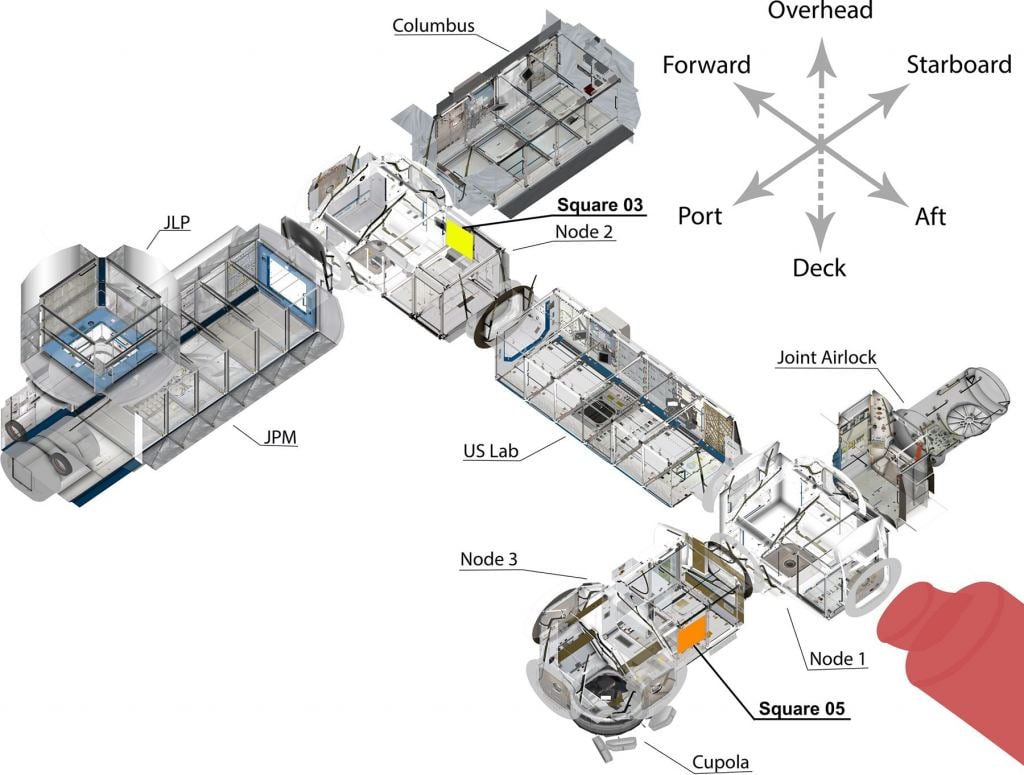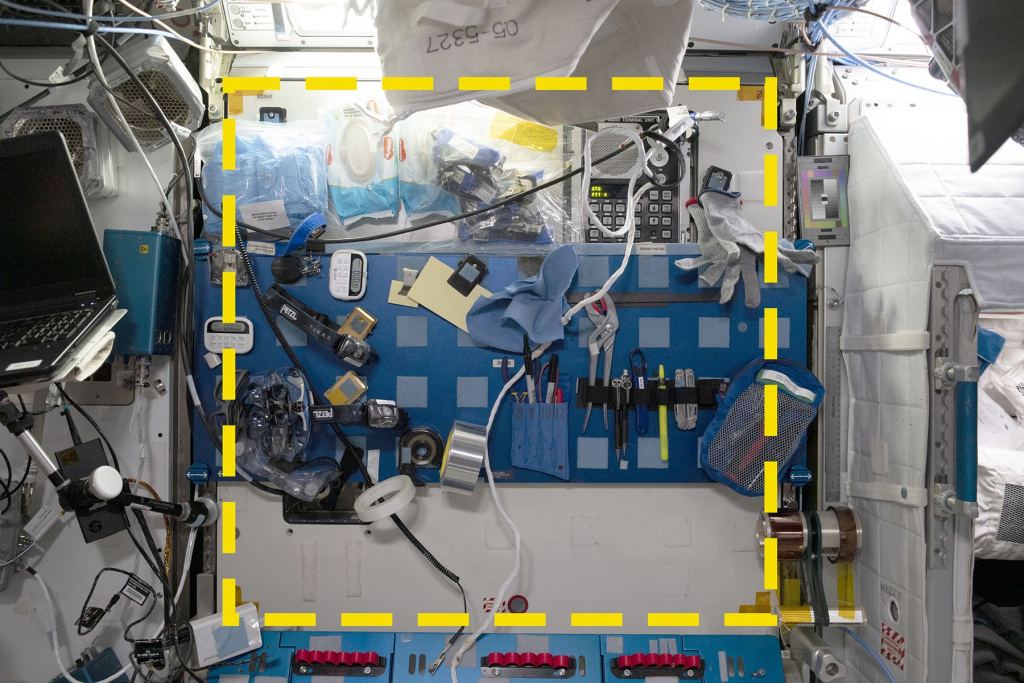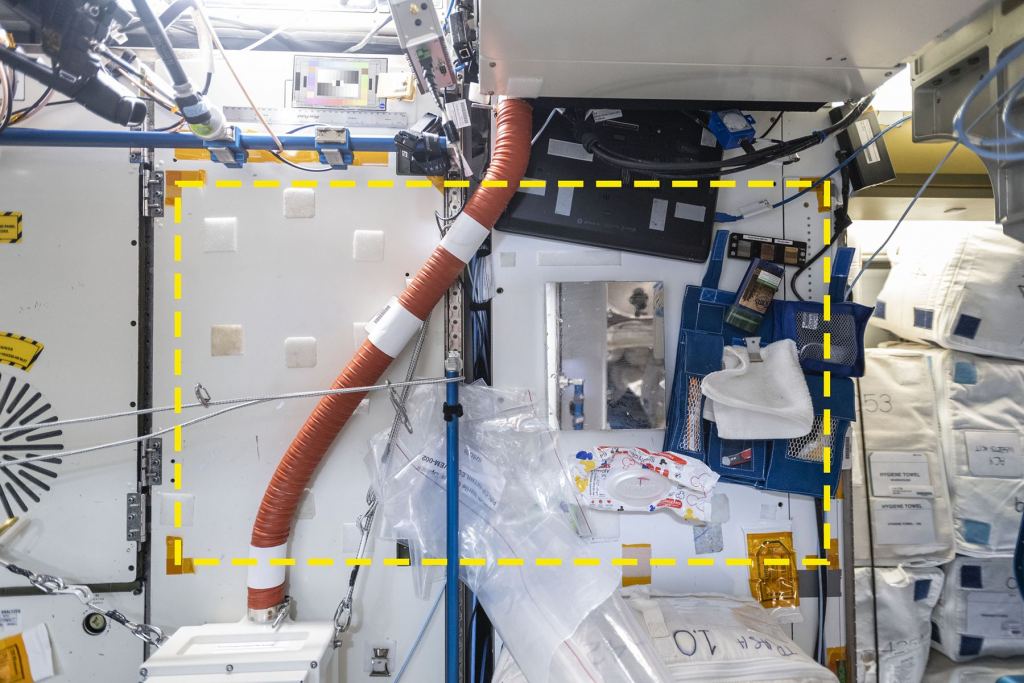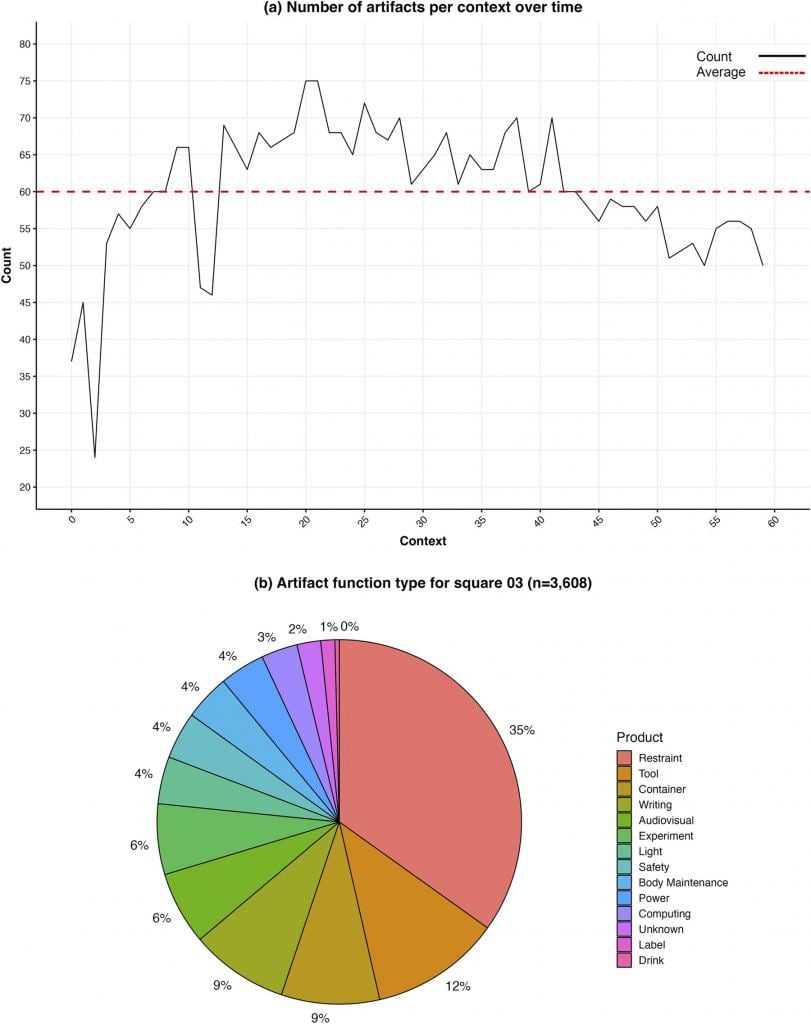Archaeology is the study of human prehistory, so it seems incongruous to use its methods to study how humans behave in space. But that's what astronauts aboard the International Space Station are doing.
When the ISS was designed, it was built around specific tasks and needs. Living areas like latrines, exercise spaces, and food preparation and eating spaces are designed to make the space station an effective and agreeable place to work and live. But it's impossible to get these things right in any kind of facility. The people who end up working and living on the ISS find their own ways to use the spaces, which might not align with the intended purpose.
In an effort to understand how astronauts really use the spaces on the ISS, astronauts adapted methods used in archaeology. A team led by Justin Walsh of Chapman University in California had astronauts on the ISS take daily photos to see how different areas on the station are really used. They published their results in research titled " Archaeology in space: The Sampling Quadrangle Assemblages Research Experiment (SQuARE) on the International Space Station. Report 1: Squares 03 and 05 " in the journal PLOS One.
SQuARE is part of the International Space Station Archaeological Project (ISSAP.)
"ISSAP aims to fill a gap in social science investigation into the human experience of long-duration spaceflight. As the largest, most intensively inhabited space station to date, with over 270 visitors from 23 countries during more than 23 years of continuous habitation, the International Space Station (ISS) is the ideal example of a new kind of spacefaring community—"a micro-society in a mini-world," the authors explain.
"Our primary goal is to identify how humans adapt to life in a new environment for which our species has not evolved, one characterized by isolation, confinement, and especially microgravity," the researchers write. The microgravity is especially interesting. Its benefits are the ability to work and move in 360 degrees and to do experiments that are impossible on Earth. The downside is that anything unrestrained simply floats away.
According to the authors, this is the first time archaeological fieldwork has been used in space. SQuARE had four goals:
- To develop a new understanding of how humans adapt to life in an environmental context for which we are not evolutionarily adapted, using evidence from the observation of material culture;
- To identify disjunctions between planned and actual usage of facilities on a space station;
- To develop and test techniques that enable archaeological research at a distance; and
- To demonstrate the relevance of social science methods and perspectives for improving life in space.
SQuARE adapted a method archaeologists use to study archaeological sites called the shovel test pit. Shovel test pits are shallow pits excavated in a grid overlain a site to see what artifacts might be underground. They're used in the first phase of an archaeological study and help scientists determine where to dig deeper in subsequent phases.
Obviously, nobody's digging actual holes into the space station. Instead of holes, the ISS crew took pictures of six locations on the ISS every day for 60 days—between January and March 2022—to determine how they were being used. These images go beyond interviewing astronauts to see how they adapt to such an unusual working/living situation. The human mind being what it is, interviews can leave out details that might seem irrelevant but are actually revealing.
The research article in PLOS One concerns two of the six areas: the latrine/exercise equipment area and the maintenance area.
"Using the photographs and an innovative web tool, we identified 5,438 instances of items, labelling them by type and function," the authors explain in their research article. The 'artifacts' in the images included Post-It notes, writing tools, and an augmented reality headset. The research also includes astronaut activity reports which allowed for chronological cross-referencing.
The results show that an area near the latrine/exercise space without a designated purpose was used to store toiletries, resealable bags, and a seldom-used computer. The maintenance area was repurposed. No maintenance was done there, and the space was mostly used for storage.
"One of the project goals is understanding cultural adaptations to the microgravity environment," the authors explain in their research. They were especially interested in what they call 'gravity surrogates,' simple items used to keep things in their place. On Earth, we can just set a pen down on our desk, and it stays there until we need it again. But in microgravity, astronauts have to adapt.
The image of Square 05 shows an example of how astronauts adapt to their surroundings in unforeseen ways. The blue bar is a metal handrail used to help astronauts move around the ISS, but as NASA acknowledges, "they also serve as convenient locations for temporary mounting, affixing, or restraint of loose equipment and as attachment points for equipment." The blue bar is just one of many examples of things with other uses serving as restraints in microgravity.
SQuARE shows how spaces get used in unintended ways. Square 03 was intended for maintenance work but is used differently. "But much of the time, there was nobody working here—a fact that is not captured by historic photos of the area precisely because nothing is happening," the authors explain.
Instead it's used as a pegboard, like one mounted on a wall in a home. It's a convenient place to store all types of items, some of which aren't even used in the space because there are so many attachment points.
The authors say that their work provides "insights into material culture," and that their results can be used in future spacecraft design. They can also help them study the rest of the squares more effectively.
"The experiment is the first archaeology ever to happen off of the planet Earth. By applying a very traditional method for sampling a site to a completely new kind of archaeological context, we show how the ISS crew uses different areas of the space station in ways that diverge from designs and mission plans. Architects and planners of future space stations can learn valuable lessons from this work," the researchers conclude.
 Universe Today
Universe Today




